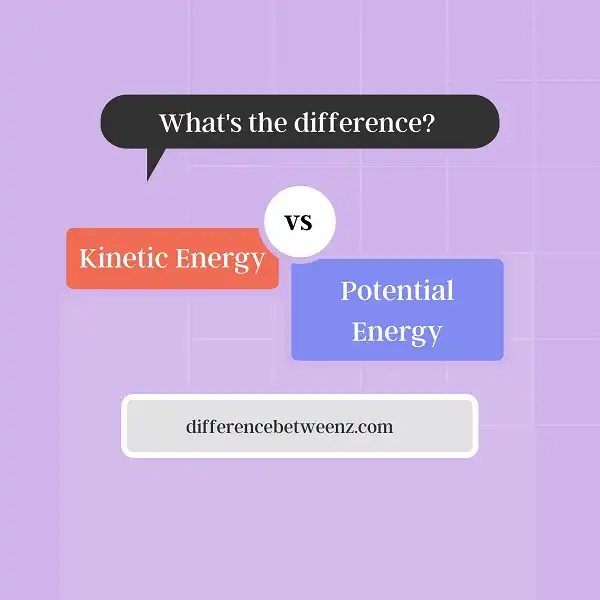In physics, there are two types of energy: kinetic and potential. Kinetic energy is the energy of motion, while potential energy is the energy that an object has due to its position or condition. In this blog post, we’ll explore the difference between these two types of energy and discuss some examples.
What is Kinetic Energy?
Kinetic energy is the energy that an object has due to its motion. It is equal to half of the object’s mass times its velocity squared. The SI unit for kinetic energy is the joule. Kinetic energy can be converted into other forms of energy, such as potential energy, thermal energy, or electrical energy. It can also be converted into work, which is done when an object moves against a force. For example, when a car brakes, the kinetic energy of the car is converted into heat and sound. The faster an object is moving, the more kinetic energy it has. Kinetic energy is a type of mechanical energy, which means it is associated with the movement of objects.
What is Potential Energy?
Potential energy is a type of energy that is stored in an object. It is the energy that the object has because of its position or because of the energy that was put into it. For example, a rock at the top of a hill has potential energy because it could fall down the hill. The more mass an object has, the more potential energy it has. The farther away from the ground an object is, the more potential energy it has. And the faster an object is moving, the more kinetic energy it has. When an object changes position, potential energy is converted to kinetic energy or vice versa.
Difference between Kinetic Energy and Potential Energy
Potential energy is the energy that an object has due to its position relative to other objects. For example, a ball sitting on a table has potential energy because it could fall off the table at any moment. Kinetic energy, on the other hand, is the energy that an object has due to its motion. A ball that is rolling across a table has kinetic energy. It is important to note that both types of energy can be converted into each other. For example, if a ball falls off a table, its potential energy will be converted into kinetic energy.
Conclusion
Kinetic energy is the energy of motion. Potential energy is stored energy. When an object has potential energy, it means that it has the ability to do work. There are many different types of potential energy, but one of the most common is gravitational potential energy. This type of potential energy arises when an object is elevated above another object. The higher the object is elevated, the more gravitational potential energy it has. Other forms of potential energy can be created through chemical reactions or by using electricity to store power.


